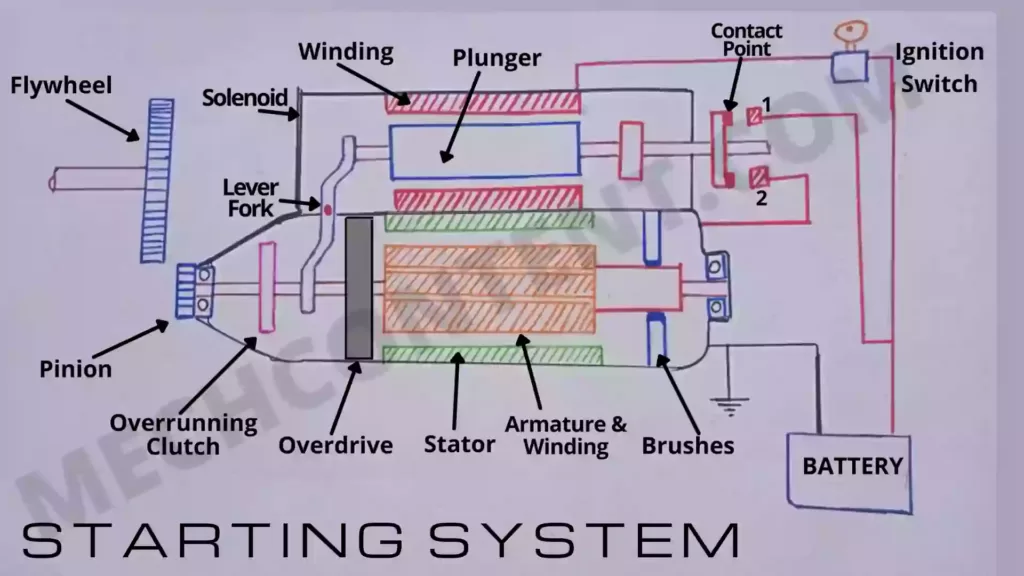The smaller engines on two-wheelers are easy to start manually using a kick, but large engines require more force to start (to rotate the crankshaft). Thus such automobiles require a starting system. It is better to know about the how starting system works and what makes the starting system.
In this article, we’re going to discuss:
- What is Automobile starting system?
- Construction:-
- How starting system in the automobile work?
- Advantages of automobile starting system:
What is Automobile starting system?
Automobile starting system is the method of rotating the crankshaft with the help of a starter motor to start the engine. The Starter motor helps to rotate the crankshaft, which allows to piston to reciprocate inside the cylinder to start the engine.

In this system, less or no effort is required to start the engine as compared to the kick-start system.
Construction:-
The below figure shows the construction of a starting system.

The self-start System consists of the following vital components.
1) Battery: The battery supplies the power to the Starter Motor.
2) Ignition switch: The ignition switch is used to connect or disconnect the connection between the battery and the solenoid.
Therefore when the ignition switch is on, The current flows from the battery to the system.
3) Plunger:- It is located inside the solenoid. The plunger has a contact point on the right end. Therefore, when the plunger is actuated by a solenoid, the contact point connects point 1 and point 2. Therefore the current flows from the battery to the motor.
The plunger is actuated by a solenoid. A return spring is also connected to the plunger. Therefore when the ignition switch goes off, the plunger comes to its original position.
4) Lever Fork:- One end of the lever fork is connected to the plunger and another end is connected to the motor shaft and pivoted in the middle.
Therefore, when the plunger moves from left to right, the lever fork pushes the pinion forward to mesh with the flywheel.
5) Solenoid:- It is an electromagnet used to actuate the plunger. When current passes through the winding of the solenoid, it generates a magnetic field. This magnetic field causes the plunger to actuate.
6) Starting Motor:- It is a DC Motor, and has a pinion on the motor shaft end to mesh with Flywheel. It runs on battery power.
How starting system in the automobile work?
When the driver turns on the ignition switch, at first current flows from the battery to the solenoid therefore solenoid gets energized & pushes the plunger from left to right.
It will cause the contact point to connect points 1 & point 2. Therefore the current flows from the battery to the motor to start the motor.
Then, due to plunger movement from left to right, the lever fork pushes the pinion forward to mesh with the flywheel gear resulting in the flywheel rotating to start the engine.
Advantages of automobile starting system:
- Less Effort Required.